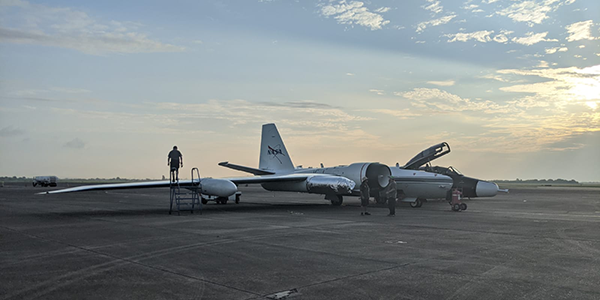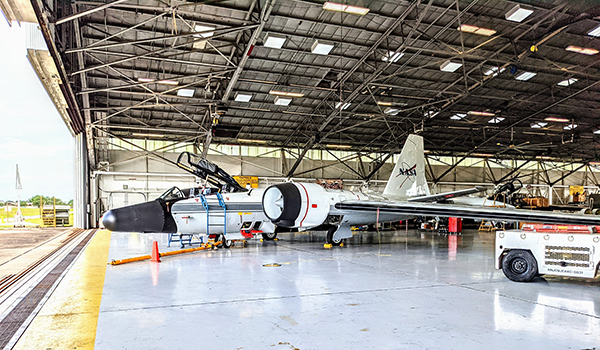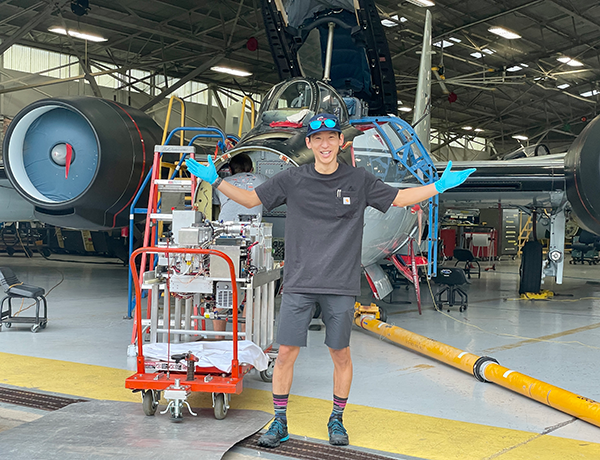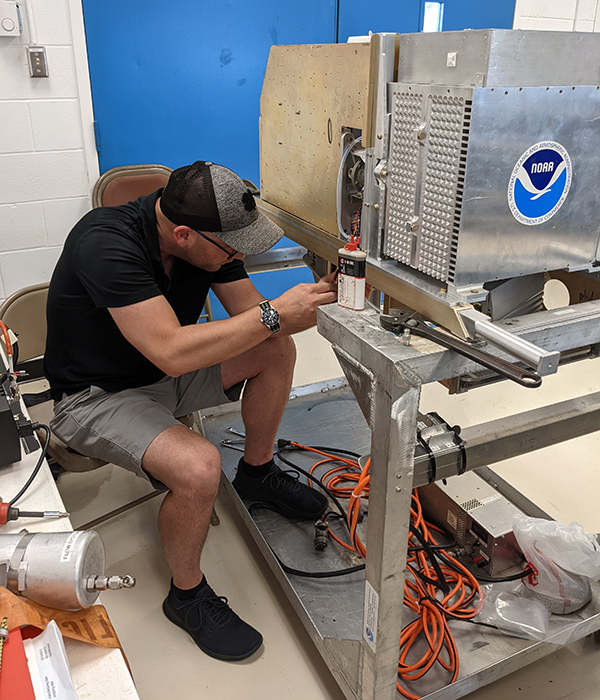A .gov website belongs to an official government organization in the United States.
A lock () or https:// means you've safely connected to the .gov website. Share sensitive information only on official, secure websites.
10 August 2021

NOAA and CIRES researchers from CSL are at Johnson Space Center in Houston this week to install atmospheric instrumentation on the NASA WB-57 high-altitude research aircraft and conduct a series of test flights in preparation for next summer's ACCLIP field campaign. CSL instruments will collect measurements of ozone, black carbon, and aerosol composition from the atmosphere at altitudes up to 60,000 ft.
The Asian Summer Monsoon Chemical & CLimate Impact Project (ACCLIP) is a joint NASA and NCAR airborne campaign that aims to investigate atmospheric composition, chemistry, and dynamics associated with the Asian Summer Monsoon (ASM). The ASM is the largest meteorological pattern in the Northern Hemisphere summer season and is associated with deep convection over South, Southeast, and East Asia that lofts pollution and biomass burning emissions into the upper troposphere and lower stratosphere. This coupling of the most polluted boundary layer on Earth to the largest dynamical system in the summer season has the potential to create significant chemical and climate impacts. An accurate representation of these processes in chemistry-climate models is needed for predicting the ASM's future impact in a changing climate.
ACCLIP will operate the NASA WB-57 and NCAR G-V aircrafts out of South Korea for a two-month period in summer of 2022. CSL scientists will deploy instruments on both aircraft during the campaign. CSL's Troy Thornberry is a co-investigator and mission scientist for the project.


